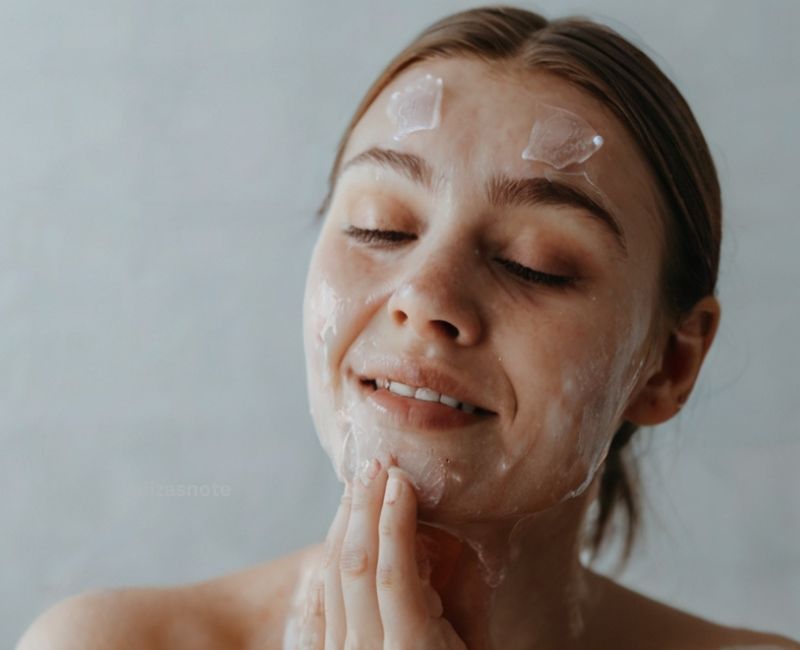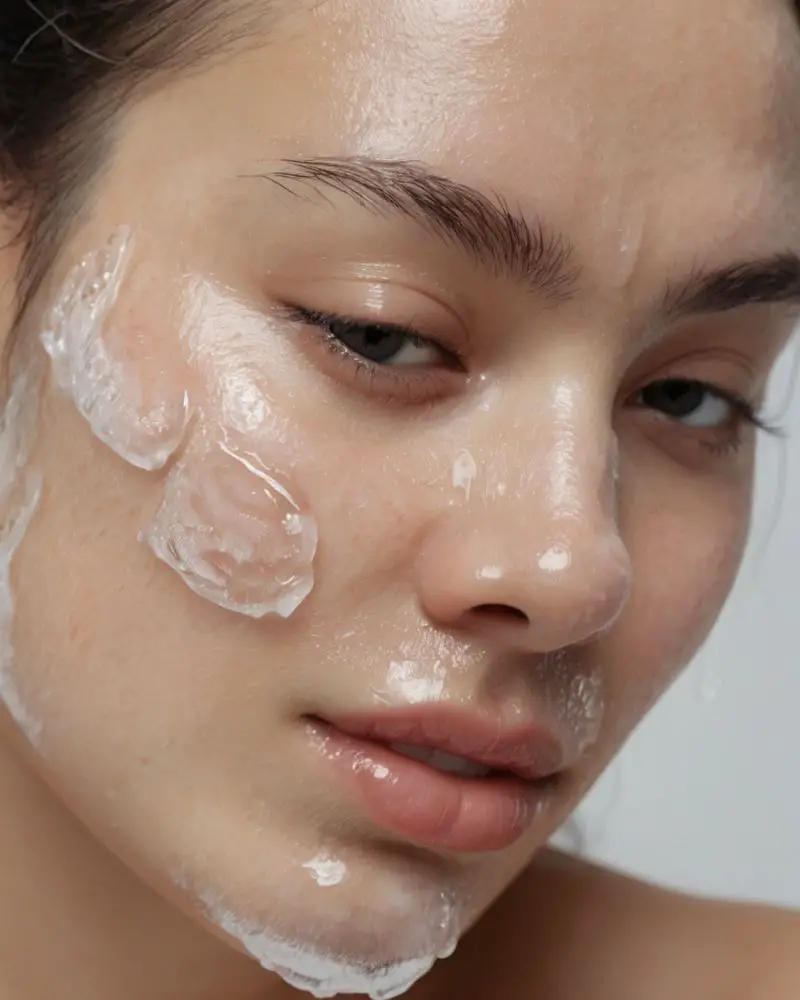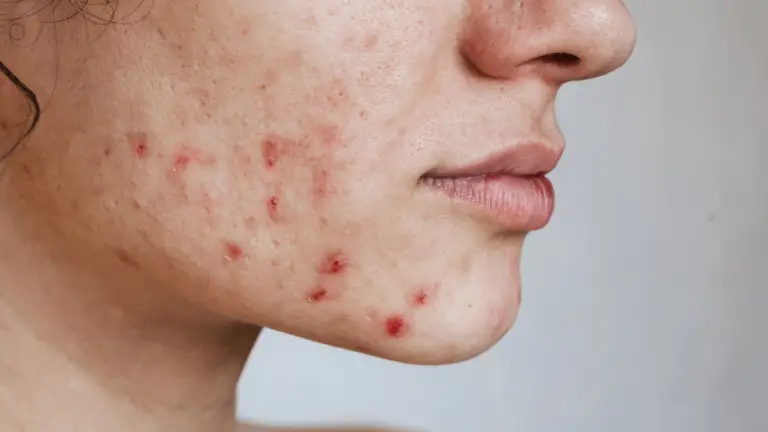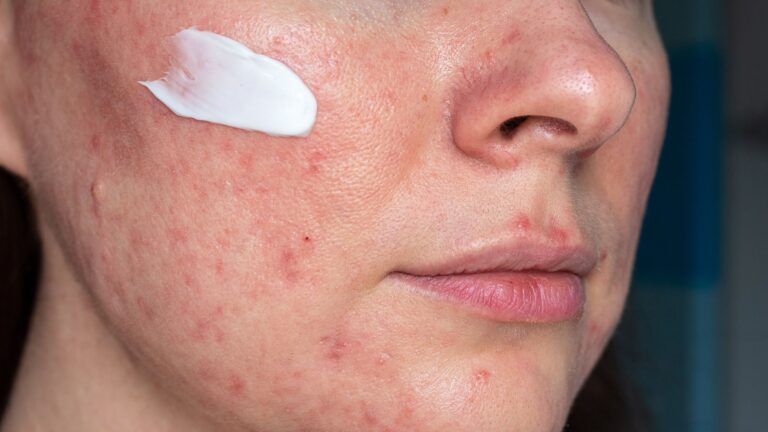Can Ice Remove Pimple Marks

Pimple marks, those lingering reminders of past breakouts, often prompt the question: Can ice remove pimple marks?
Ice has been touted as a quick fix for reducing inflammation and redness caused by pimples. But does its magic extend to fading post-acne marks?
If you’re eager to learn whether ice holds promise as a skincare savior, stick around as we examine its benefits and limitations. Join me in deciphering whether ice is indeed the secret weapon in the battle against stubborn pimple marks.
Science Behind | Can ice remove pimple marks
Ice therapy is a widely practiced home remedy for alleviating various skin issues, including acne and pimple marks. There are some scientific reasons behind how ice therapy can aid in reducing pimple marks.
1. Inflammation Reduction:
Acne often involves inflammation, which can exacerbate the appearance of pimples and lead to scarring. Ice application constricts blood vessels, reducing blood flow to the area and diminishing inflammation, thereby minimizing the prominence of pimples.
2. Numbing Sensation:
Ice application provides a numbing effect, temporarily relieving discomfort associated with acne. This numbing sensation helps alleviate itching or irritation caused by inflamed pimples.
Related: Does Oily Skin Cause Acne
3. Pore Tightening:
Ice therapy tightens skin pores, making them appear smaller. Smaller pores hinder the accumulation of dirt, oil, and bacteria, preventing the formation of new pimples and reducing the visibility of existing ones.
4. Improved Circulation
While ice initially causes vasoconstriction, its removal prompts vasodilation, enhancing blood circulation to the area. This improved circulation accelerates healing and aids in the regeneration of damaged skin tissues caused by acne.
5. Reduced Swelling and Redness
Ice therapy diminishes the swelling and redness associated with acne lesions. By constricting blood vessels, ice decreases blood flow to inflamed areas, thereby reducing swelling and redness.
6. Scar Prevention
Ice therapy, by mitigating inflammation and promoting rapid healing, can help prevent permanent scarring or marks left by pimples. By minimizing the severity of acne lesions, ice therapy reduces the likelihood of scarring and promotes smoother, clearer skin.
It’s advisable to wrap ice in a cloth or towel and apply it to affected areas for short intervals, typically no more than 5-10 minutes.
Combining Ice Therapy with Other Treatments
Integrating ice therapy with other skincare treatments can significantly boost its efficacy in addressing pimple marks and enhancing overall skin health. Here’s how:
1. Topical Treatments
Ice therapy pairs well with topical solutions like retinoids, hydroquinone, or vitamin C serums, which target pimple marks, even out skin tone, and stimulate collagen production. Preceding topical applications with ice therapy can enhance their absorption by temporarily tightening pores and reducing inflammation, maximizing their effectiveness.
2. Chemical Peels
Chemical peels utilize exfoliating agents such as alpha hydroxy acids (AHAs) or beta hydroxy acids (BHAs) to eliminate dead skin cells and encourage cell turnover. Combining ice therapy with chemical peels can amplify results by calming the skin, minimizing post-peel redness, and mitigating inflammation.
3. Microneedling
Microneedling involves the use of a device with fine needles to create controlled micro-injuries, prompting collagen production and skin regeneration. Employing ice therapy prior to microneedling can numb the skin and alleviate discomfort during the procedure.
4. Laser Therapy
Laser treatments like fractional laser resurfacing or intense pulsed light (IPL) therapy target pimple marks by boosting collagen production and rejuvenating the skin. Ice therapy before laser treatments cools the skin, lessens discomfort, and mitigates post-treatment inflammation.
5. Sunscreen
Sun exposure exacerbates pimple marks and heightens the risk of hyperpigmentation. Daily sunscreen application is crucial for shielding the skin from UV damage. Ice therapy, when combined with sunscreen, calms the skin, reduces inflammation, and augments the sunscreen’s efficacy.
6. Healthy Skincare Routine
Incorporating ice therapy into a regular skincare regimen preserves the benefits of other treatments and fosters overall skin wellness. Ice therapy serves as a refreshing and soothing step post-cleansing and pre-moisturization or other skincare applications.
Individual skin sensitivities and tolerance levels vary, necessitating a gradual approach to ice therapy duration and frequency. Consulting with a dermatologist to specific skin concerns and objectives.
Myths:
Dispelling myths and misconceptions about skincare is essential for ensuring that individuals make well-informed decisions and achieve optimal results. Here are some common misconceptions addressed:
1. Myth
Contrary to popular belief, popping pimples can worsen inflammation, introduce bacteria, and result in scarring. It’s best to allow pimples to heal naturally or seek professional dermatological treatment.
2. Myth
UV rays can penetrate clouds, so sunscreen should be applied daily to protect against premature aging, sunburns, and skin cancer, regardless of weather conditions.
3. Myth
Skipping moisturizer can lead to produce more oil. Lightweight, non-comedogenic moisturizers can help balance oil production and maintain skin hydration.
4. Myth
Over-exfoliating may cause skin irritation. Gentle exfoliation 2-3 times per week is usually sufficient to promote cell turnover without harm.
5. Myth
While some natural ingredients offer skincare benefits, not all are suitable for every skin type. Patch testing and consulting with a dermatologist before use are important.
6. Myth:
Acne can affect individuals of all ages. Identifying underlying causes and implementing targeted skincare routines are key to effective treatment.
7. Myth
SPF indicates protection against UVB rays, not UVA rays. Sunscreen should be reapplied every 2 hours for optimal protection.
8. Myth
Consistent use over time is typically required for skincare products to deliver noticeable results.
9. Myth
Tailoring skincare products to individual skin concerns ensures optimal efficacy and minimizes adverse reactions.
10. Myth
While a tan may temporarily conceal imperfections, it accelerates skin aging and increases the risk of skin cancer. Sunless tanners or makeup offer safer alternatives for achieving a bronzed appearance.
Individuals can make informed decisions about their skincare routines, leading to healthier and more radiant skin in the long term.
Last call:
- I have explored the ways in which ice therapy can alleviate inflammation, diminish redness, and potentially fade pimple marks with consistent application.
- Nonetheless, it’s crucial to approach ice therapy with caution, considering individual skin sensitivities and seeking guidance from skincare professionals when necessary.
- Your interest and engagement motivate me to continually explore the intricacies of skincare science. Together, let’s continue to arm ourselves with knowledge and solutions for achieving radiant, healthy skin.
FAQ: Can Ice Remove Pimple Marks
[sp_easyaccordion id=”1676″]






